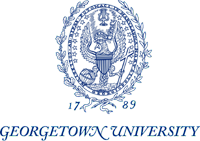successful admissions
of students enter the university of their choice
students consult Education Index when applying for universites
successful admissions
of students enter the university of their choice
students consult Education Index when applying for universites
About 93% of Georgetown University undergraduates are involved in at least one of the 180 registered student organizations, which cover a variety of interests: student government, club sports, media and publications, performing arts, religion, and volunteer and service. Students also operate campus stores, banks, and medical services. Students often find their interests at the Student Activities Commission Club Fair, where both official and unofficial organizations set up tables. Besides, campus organizations include the country's largest student-run business and largest student-run financial institution.
Housing at Georgetown University consists of 13 residence halls at the main campus and a law center campus. Housing on Georgetown's main campus is divided between "halls," usually more traditional dormitories, and "villages," usually less traditional apartment complexes. In addition, Georgetown operates many townhouses in the Georgetown neighborhood, usually for second, third, and fourth-year students.
A majority of undergraduates, eighty-five percent, live on-campus. The remainder live off-campus, mostly in the Georgetown, Burleith, and Foxhall neighborhoods. On-campus housing is not available for main campus graduate students. Housing options include coed housing, apartments for single students, special housing for disabled students, wellness housing (alcohol/drug/smoke-free).
Expensive tuition and fees worth to be hired by one of the US top employers. Georgetown’s list of top employers includes many of the most desirable employers in the country. The majority of graduates work in spheres of Financial Services, Consulting, and Information Technology/Services with average salary about $59,000.
Graduate employment: 95%

As a location, Georgetown is ranked nationally as the second best college town by the Princeton Review. The Georgetown neighborhood west of Wisconsin Avenue NW, is dominated by the presence of university students. Students have easy access to commercial area, the Georgetown Waterfront, and numerous trails that lead to the National Mall and other parks.